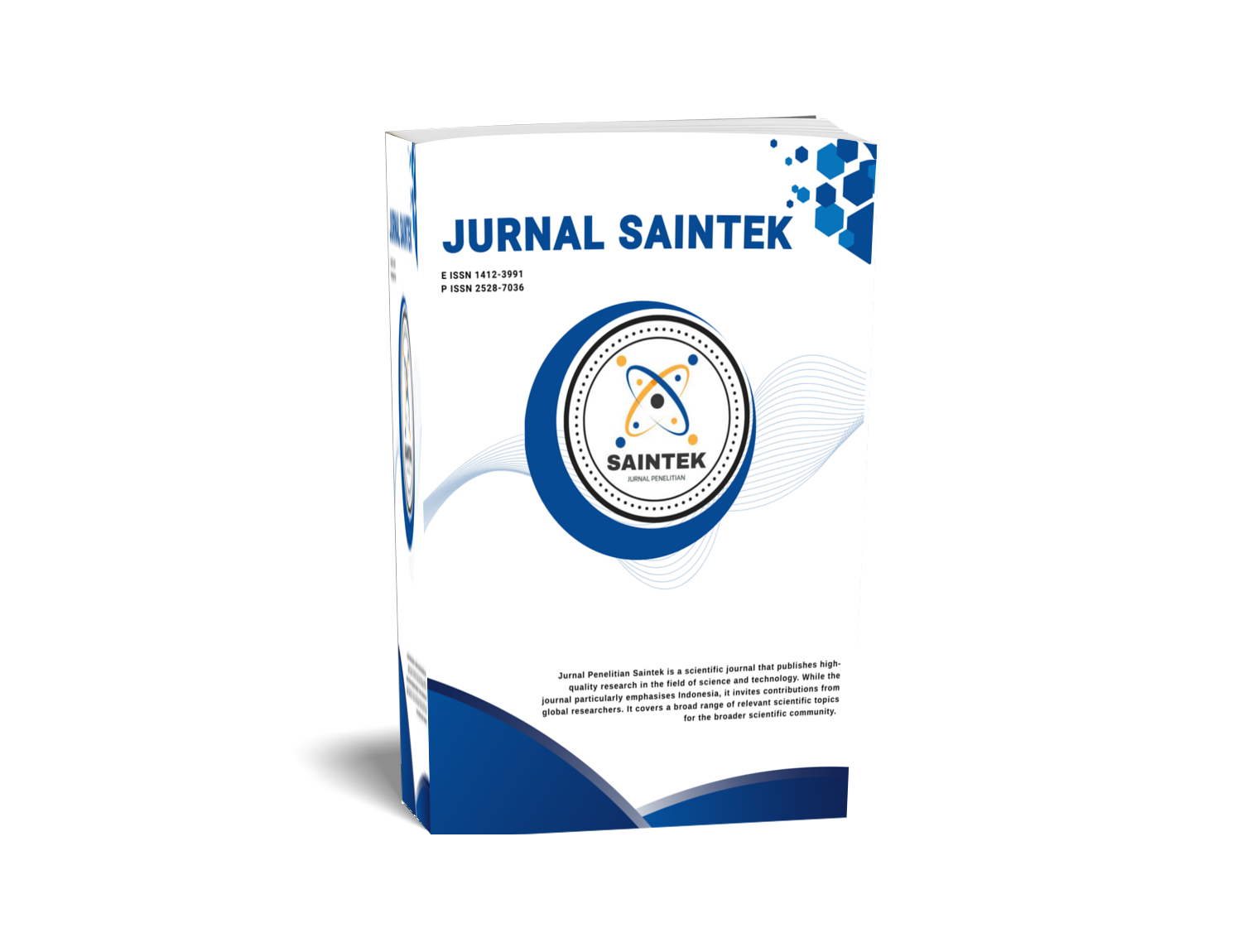Pengaruh variasi jenis dan peletakan refugia terhadap kemelimpahan serangga pada ekosistem sawah
DOI:
https://doi.org/10.21831/jps.v1i1.58324Keywords:
refugia, kacang panjang, kenikir, sawahAbstract
References
Asmoro, P. P., Dadang, Pudjianto, & Winasa, I. W. (2021a). Olfactory Response of Plutella xylostella (Lepidoptera: Yponomeutidae) Adults to Refugia Plant. IOP Conference Series: Earth and Environmental Science, 752(1). https://doi.org/10.1088/1755-1315/752/1/012039
Asmoro, P. P., Dadang, Pudjianto, & Winasa, I. W. (2021b). The effect of flower morphology on the longevity of Diadegma semiclausum (Hymenoptera: Ichneumonidae). IOP Conference Series: Earth and Environmental Science, 694(1). https://doi.org/10.1088/1755-1315/694/1/012049
Barratt, B. I. P., Moran, V. C., Bigler, F., & van Lenteren, J. C. (2018). The status of biological control and recommendations for improving uptake for the future. BioControl, 63(1), 155–167. https://doi.org/10.1007/s10526-017-9831-y
Bianchi, Felix & Wäckers, Felix. (2008). Effects of flower attractiveness and nectar availability in field margins on biological control by parasitoids. Biological Control. 46. 400-408. 10.1016/j.biocontrol.2008.04.010.
Chang, H., Chen, P., & Ma, M. (2020). Feeding preference of Altica deserticola for leaves of Glycyrrhiza glabra and G. uralensis and its mechanism. Scientific Reports, 10(1). https://doi.org/10.1038/s41598-020-58537-y
Erdiansyah, I., Damanhuri, D., & Kusuma Ningrum, D. R. (2020). The Application of Marigold Flower and Pintoi Peanuts on The Natural Enemies of Rice Plant at Antirogo Sub-District Jember Regency. El-Hayah, 7(3). https://doi.org/10.18860/elha.v7i3.10054
Erdiansyah, I., & Putri, S. U. (2019). Implementasi Tanaman Refugia dan Peran Serangga pada Tanaman Padi Sawah (Oryza sativa L.) di Kabupaten Jember. Agrin, 22(2). https://doi.org/10.20884/1.agrin.2018.22.2.448
Fatimah, S., Marsuni, Y., & Rosa, H. O. (2022). Pengaruh Tanaman Refugia Kenikir (cosmos caudatus) kombinasi Jarak Tanam Untuk Menghindari serangan penyakit antraknosa pada tanaman Cabai Besar. JURNAL PROTEKSI TANAMAN TROPIKA, 5(1), 420–428. https://doi.org/10.20527/jptt.v5i1.1030
Fouks, B., & Wagoner, K. M. (2019). Pollinator parasites and the evolution of floral traits. Ecology and Evolution, 9(11), 6722–6737. https://doi.org/10.1002/ece3.4989
Godfray, H. C. J. (2007). Parasitoids. Encyclopedia of Biodiversity, 1–13. https://doi.org/10.1016/b0-12-226865-2/00218-2
Held, D. W. (2020). Non-Chemical approaches to Pest Management. Urban Landscape Entomology, 165–184. https://doi.org/10.1016/b978-0-12-813071-1.00008-7
Henuhili, V. and Aminatun, T. (2013). Natural enemy conservation as natural control of pests by management of agroecosystem. J. Penelit. Saintek, 18: 29-40
Hooks, C. R. R., & Fereres, A. (2006). Protecting crops from non-persistently aphid-transmitted viruses: A review on the use of barrier plants as a management tool. Virus Research, Vol. 120. https://doi.org/10.1016/j.virusres.2006.02.006
Ibrahim, E., & Mugiasih, A. (2020). Diversity of pests and natural enemies in rice field agroecosystem with ecological engineering and without ecological engineering. IOP Conference Series: Earth and Environmental Science, 484(1). https://doi.org/10.1088/1755-1315/484/1/012108
Jonsson, M., Kaartinen, R., & Straub, C. S. (2017). Relationships between natural enemy diversity and biological control. Current Opinion in Insect Science, 20, 1–6. https://doi.org/10.1016/j.cois.2017.01.001
Nelly, N., Hamid, H., Yunisman, Y., Pratama, A. S., Nawir, W., & Nelly, N. (2020). The diversity of insects in West Sumatera's local rice by planting refugia as an effort to conserve natural enemies. IOP Conference Series: Earth and Environmental Science, 497(1). https://doi.org/10.1088/1755-1315/497/1/012032
Parolin, P., Bresch, C., Poncet, C., & Desneux, N. (2012). Functional characteristics of secondary plants for increased pest management. International Journal of Pest Management, 58(4), 369–377. https://doi.org/10.1080/09670874.2012.734869
Pujiastuti, Y., Weni, H. W. S., & Umayah, A. (2015). Peran Tanaman Refugia Terhadap Kelimpahan Serangga Herbivora pada Tanaman Padi Pasang Surut. Prosiding Seminar Nasional Lahan Suboptimal 2015.
Rattanapun, Wigunda. (2014). Biology of rice bug Leptocorisa oratorius (Fabricius) (Hemiptera: Alydidae), population change and alternative host plants. Communications in agricultural and applied biological sciences. 78. 193-7.
Rezaei, Mehran & Talebi, Ali Asghar & Tazerouni, Zahra. (2019). Parasitoids: The Role of Host Preference and Host Specificity in Biological Control. In: Parasitoids: Biology, Behavior and Ecology Chapter: 1. Nova Science Publishers, Inc. USA.
Rochman, M. T., Mudjiono, G., & Ikawati, S. (2019). Penerapan Tanaman Pinggir pada Budidaya Padi (Oryza sativa L.) Secara PHT terhadap Kelimpahan Populasi Nilaparvata lugens Stal. (Homoptera: Delphacidae) dan Laba-laba. Jurnal Hama Dan Penyakit Tumbuhan, 5(1).
Setyadin, Y., Hilya Abida, S., Azzamuddin, H., Fatiyatur Rahmah, S., & Setyo Leksono, A. (2017). Efek Refugia Tanaman Jagung (Zea mays) dan Tanaman Kacang Panjang (Vigna cylindrica) pada Pola Kunjungan Serangga di Sawah Padi (Oryza sativa) Dusun Balong, Karanglo, Malang. Biotropika, 5(2). https://doi.org/10.21776/ub.biotropika.2017.005.02.3
Sharma, A., Diwevidi, V. D., Singh, S., Pawar, K. K., Jerman, M., Singh, L. B., ... Srivastawa, D. (2013). Biological Control and its Importance in Agriculture. International Journal of Biotechnology and Bioengineering Research, 4(3).
Sitepu, M. B., Tobing, M. C. L., & Bakti, D. (2018). The role of refugia plants to the eggs yellow rice stem borer (Scirpophaga incertulas Walker) parasitoids parasitation rate. Journal of Physics: Conference Series, 1116(5), 8–13. https://doi.org/10.1088/1742-6596/1116/5/052064
Snyder, W. E. (2019). Give predators a complement: Conserving natural enemy biodiversity to improve biocontrol. Biological Control, 135, 73–82. https://doi.org/10.1016/j.biocontrol.2019.04.017
Sumini & Bahri, S. (2020). The Diversity and Abundance of Natural Enemies in Rice Plants Based on the Distance to the Refugia Plants. Jurnal Agrotek Tropika, 8(1).
Susanti, R., & Hanif, A. (2018). Analisa Kadar Kuantitatif Senyawa Lutein dari Tanaman Kenikir (Tagetes erecta L.) Sebagai Mikrohabitat dari Musuh Alami Hama. AGRIUM: Jurnal Ilmu Pertanian, 21(3).
Usyati, N., Kurniawati, N., & Rumasa, O. (2020). Impact of ecological engineering on the type and population of pests, natural enemies, and yields of the Rice. Jurnal Hama Dan Penyakit Tumbuhan Tropika, 20(2), 140–149. https://doi.org/10.23960/jhptt.220140-149
Weni, H. W. S., Pujiastuti, Y., & Umayah, A. (2016). Efek Refugia terhadap Arthropoda Tanaman Padi (Oryza sativa) di Sawah Pasang Surut Refugia Effects toward Arthropods Attacking Rice (Oryza sativa) in Tidal Swamp. Prosiding Seminar Nasional Lahan Suboptimal, 638–647.Asmoro, P. P., Dadang, Pudjianto, & Winasa, I. W. 2021a. Olfactory Response of Plutella xylostella (Lepidoptera: Yponomeutidae) Adults to Refugia Plant. IOP Conference Series: Earth and Environmental Science, 752(1). https://doi.org/10.1088/1755-1315/752/1/012039
Downloads
Published
How to Cite
Issue
Section
Citation Check
License
Who Can Submit?
Any individual may submit an original manuscript for consideration for publication in Jurnal Penelitian Saintek as long as they hold the copyright to the work or are authorized by the copyright owner(s) to submit it. Authors retain initial ownership of the copyrights to their works prior to publication, except in cases where, as a condition of employment, they have agreed to transfer copyright to their employer.
User Rights
Jurnal Penelitian Saintek is an Open Access journal. Users are granted the right to read, download, copy, distribute, print, search, or link to the full texts of articles, provided they comply with the conditions of the Creative Commons Attribution-ShareAlike License 4.0 (CC BY-SA 4.0).
https://creativecommons.org/licenses/by-sa/4.0/
Author Rights
Authors retains copyrights.
Jurnal Penelitian Saintek by http://journal.uny.ac.id/index.php/saintek is licensed under a Creative Commons Attribution-ShareAlike 4.0 International License.









